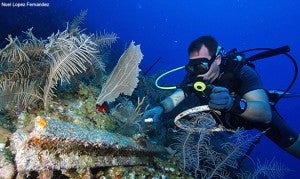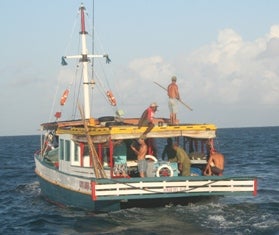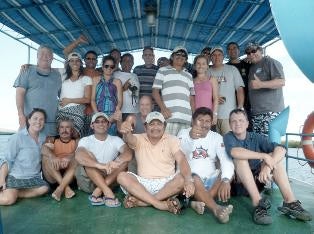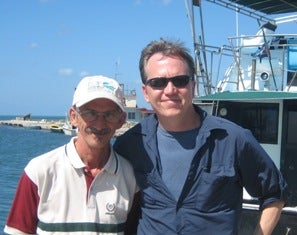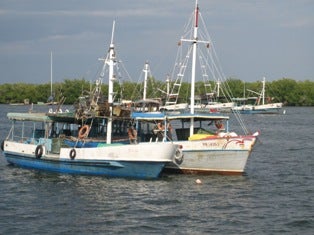
Dr. Fabián Pina Amargós is a first-rate marine scientist from Cuba, who has worked closely with EDF’s Oceans program for many years. Fabián has been a scientist with Cuba’s Center for Coastal Ecosystems Research for twenty years and was recently named director of the center.
Welcome back for Part 2 of our intern Shannon Switzer’s interview with Dr. Fabián Pina Amargós, as they discuss the marine scientist’s opinion on the effectiveness of MPA’s and ecotourism as conservation tools as well as his hopes for Cuba as a nation. Read the first part of the interview here.
SLS: Some people are skeptical that MPAs are effective in sustaining fisheries while protecting marine life. What have your studies shown you about the effectiveness of MPAs?
FPA: I think that of course, the controversial part is because nature is very variable. Sometimes you can have the results or the positive impacts of a management tool in a shorter time and sometimes it takes longer, which is dependent, for example, on the species you are trying to recover. So a species that has a short life cycle would have an impact of a no-take area faster, but if we are thinking tarpon, or goliath grouper or other species that live longer, you need to wait a longer time [to see the results].
But generally speaking, and especially where I am dealing in the Gardens, which is relevant for Cuba but also for other tropical places with similar ecosystems, we measured the results of the effect of the marine reserve. We found that after ten years of the declaration [of the MPA] the number of fish increased, the size of the fish are bigger and they are more abundant inside of the reserve. Also, they are not shy and are friendlier and allow you to get closer, so you can enjoy them more when you dive. But also, because the number has increased dramatically, we carried out an experiment and tested the spill-over effect, which is when the number of fish increases until it’s full inside, and they need to move outside. It’s not a random movement, it’s basically a density-dependent kind of movement, cause it’s crowded inside the protected area, and then they just spill over the boundaries.
Then the fishery grounds benefit from that, and you can fish outside. We’ve proved that [with our research], but now fishermen are saying most of the fish they are catching now are coming from the reserve. So now the reserves are gaining support by, not all of the fishermen, but many of them. At the beginning the vast majority of them were opposed to the reserve, and it’s a normal reaction of human behavior—you are preventing me from using a fishing ground that I’ve been using forever and my father and my grandfather and my grand grandfather were fishing on—but they realize now that this is a good tool. Read More










